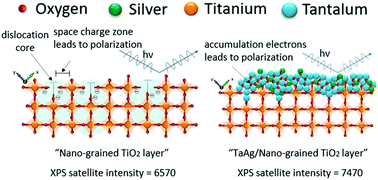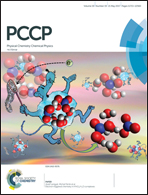Influence of charged defects on the interfacial bonding strength of tantalum- and silver-doped nanograined TiO2
Abstract
A nano-grained layer including line defects was formed on the surface of a Ti alloy (Tialloy, Ti-6Al-4V ELI). Then, the micro- and nano-grained Tialloy with the formation of TiO2 on its top surface was coated with a bioactive Ta layer with or without incorporating an antibacterial agent of Ag that was manufactured by magnetron sputtering. Subsequently, the influence of the charged defects (the defects that can be electrically charged on the surface) on the interfacial bonding strength and hardness of the surface system was studied via an electronic model. Thereby, material systems of (i) Ta coated micro-grained titanium alloy (Ta/MGTialloy), (ii) Ta coated nano-grained titanium alloy (Ta/NGTialloy), (iii) TaAg coated micro-grained titanium alloy (TaAg/MGTialloy) and (iv) TaAg coated nano-grained titanium alloy (TaAg/NGTialloy) were formed. X-ray photoelectron spectroscopy was used to probe the electronic structure of the micro- and nano-grained Tialloy, and so-formed heterostructures. The thin film/substrate interfaces exhibited different satellite peak intensities. The satellite peak intensity may be related to the interfacial bonding strength and hardness of the surface system. The interfacial layer of TaAg/NGTialloy exhibited the highest satellite intensity and maximum hardness value. The increased bonding strength and hardness in the TaAg/NGTialloy arises due to the negative core charge of the dislocations and neighbor space charge accumulation, as well as electron accumulation in the created semiconductor phases of larger band gap at the interfacial layer. These two factors generate interfacial polarization and enhance the satellite intensity. Consequently, the interfacial bonding strength and hardness of the surface system are improved by the formation of mixed covalent–ionic bonding structures around the dislocation core area and the interfacial layer. The bonding strength relationship by in situ XPS on the metal/TiO2 interfacial layer may be examined with other noble metals and applied in diverse fields.



 Please wait while we load your content...
Please wait while we load your content...